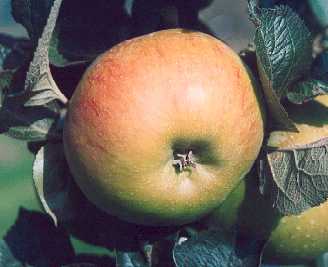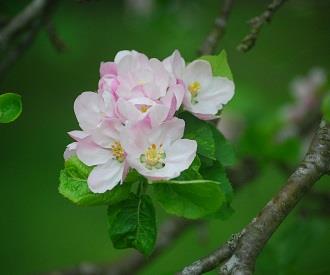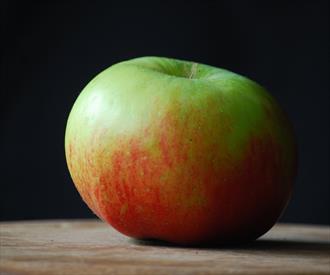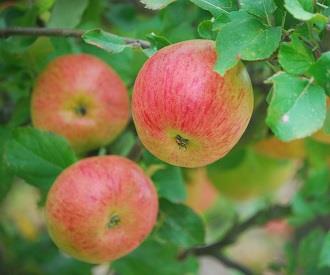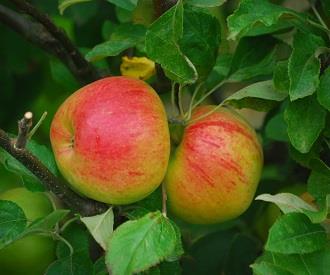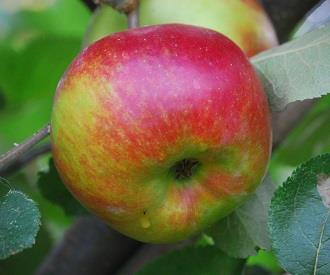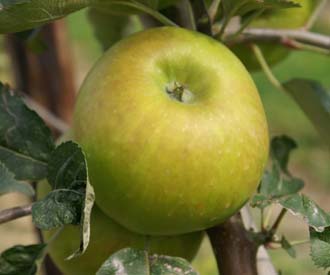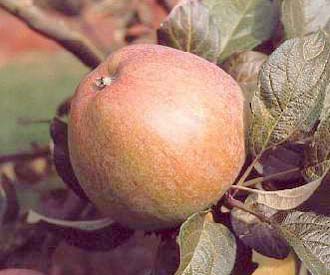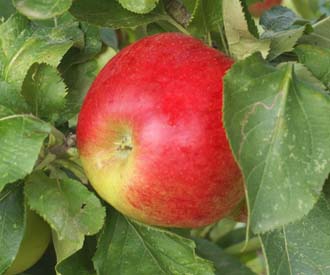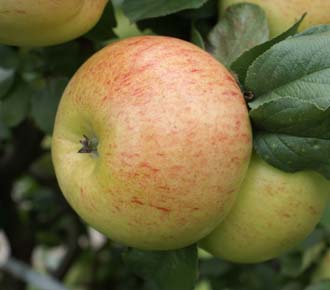Autumn 2025 / Winter 2026 seasonWe still have plenty of trees left for the winter planting season, but it is best to order ASAP.
Keepers NurseryThe UK's largest range of fruit trees
Tel. 01622 326465
Bramley's Seedling
The most popular classic English cooking apple.
Origin: Nottinghamshire UK, 1809
Pollination: Bramley's Seedling is a self-sterile triploid and would require a pollinator to produce a crop.Find pollination partners >
British-grown  All our bare-root trees are personally hand-grafted by our Nursery Manager and grown on at our nursery in Kent. We have Defra and Plant Healthy certification.
More ...
All our bare-root trees are personally hand-grafted by our Nursery Manager and grown on at our nursery in Kent. We have Defra and Plant Healthy certification.
More ...
Try these similar varieties
History and description of Bramley's Seedling
The original Bramley's Seedling tree was raised by Betsy Brailsford in her cottage garden at Southwell, Nottinghamshire, UK 1809-1813. The tree came to the notice of the nurseryman Henry Merryweather c 1857, who named the variety Bramley's Seedling after Mr Bramley who owned the cottage garden at the time, and introduced it in 1865. It received a First Class Certificate from the RHS in 1883 and was soon adopted by commercial growers. It has since become by far the best known and widely grown culinary apple in the UK.Irregular, large, flat-round fruit. Green to greenish yellow skin with some brownish orange flush and red stripes. Commercially grown fruit is usually plain green because it is picked before the colour develops. White, green tinged, juicy flesh. Cooks to a pale cream puree. Its strong acidity and flavour have made Bramley's Seedling by far the most popular English cooking apple. Very good keeping quality retaining much of its acidity and flavour until the spring. Bramley's Seedling is widely used for cider making and also produces excellent sharp tasting juice.
Very vigorous triploid tree. Characteristic large leathery leaves and thick shoots. Heavy cropping but with some biennial tendency. Partial tip bearer. Prone to bitter pit. Attractive bright pink blossom.
Characteristics of Bramley's Seedling apple trees
| Use | Culinary |
| Colour | Green |
| Flavour | Acid |
| Fruit size | Large |
| Picking time | Early Oct |
| Season of use | Nov-Mar |
| Tree vigour | Vigorous |
| Tree habit | Upright-spreading |
| Fruit-bearing | Partial tip-bearer |
| Cropping | Heavy |
| Disease resistance | Scab - Slightly susceptible Mildew - Resistant Canker - Resistant |
| Suitable for | Late Frost Northern Britain |
| Special features | Attractive Blossom Good for Cider Good for Juice |
| Pollination date | 12 |
| Pollination group | D |
| Self-fertility | Self-sterile triploid |
| Pollinators | Pollination partners |
| Progeny | Byfleet Seedling Cobra |
| Sports | Crimson Bramley Bramley 20 |
Varieties you viewed
